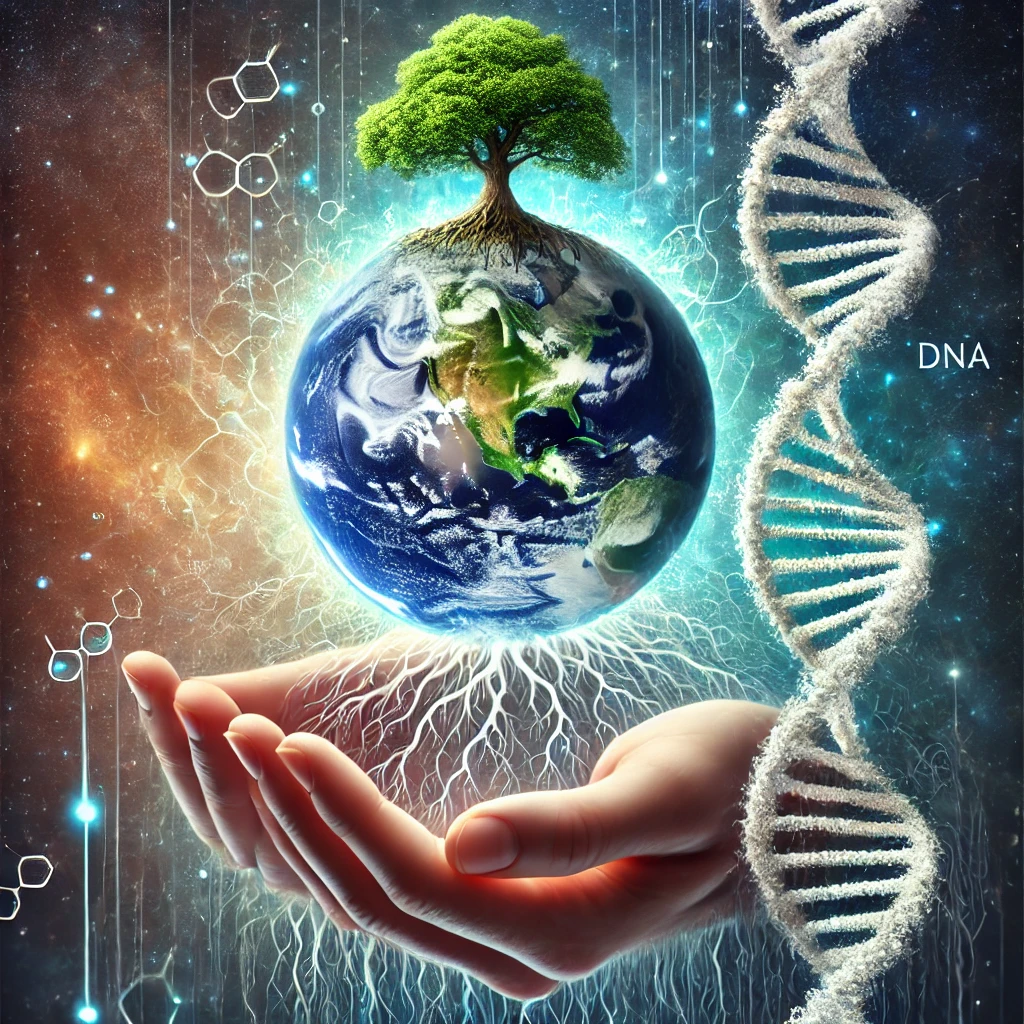Introduction
Dear Reader,
In an era marked by unprecedented scientific discovery and technological innovation, humanity finds itself at the crossroads of progress and prudence. Natural evolution, that slow yet inexorable process refined over billions of years, now intersects with our newfound ability to understand and manipulate the fundamental mechanisms of life. This convergence, while opening vast horizons of opportunity, also carries with it an imperative for circumspection. As we embark on endeavors that promise rapid change, we must acknowledge that the intricacies of nature’s grand design cannot be hastily unraveled nor superficially reassembled. Much like a master chef meticulously calibrating the balance of ingredients in a complex recipe, we too must proceed with deliberation, humility, and unwavering ethical resolve. This essay endeavors to elucidate the urgent necessity of ethical mindfulness and reverence for the grand scheme of Mother Nature in the face of humanity’s accelerating ambitions.
I. Natural Evolution: A Gradual Symphony of Change

Natural evolution represents a sublime and intricate symphony—a process that, while gradual, has produced the unparalleled diversity and resilience of life on Earth. Each evolutionary step, refined by the steady hand of natural selection over eons, constitutes a harmonious balance of genetic variations and environmental adaptations. It is a process that has been perfected through countless iterations, yielding ecosystems in which every organism, from the microscopic to the colossal, plays a critical role in sustaining the integrity of life.
The evolutionary narrative is not one of randomness but of deep-seated interconnectedness, where each mutation and adaptation forms part of a broader, almost incomprehensible, ecological framework. In this grand tapestry, even the subtlest alteration may ripple outward, engendering changes that resonate across entire ecosystems. As such, the evolution of life is a testament to nature’s profound capacity for self-regulation—a process that does not accommodate haste or carelessness.
II. Humanity’s Ascendance: The Impulse Toward Rapid Change

Contrary to the measured cadence of natural evolution, humanity is propelled by an insatiable desire for rapid transformation. Empowered by advancements in fields such as genetic engineering, synthetic biology, and environmental manipulation, our species now stands at the helm of what might be deemed a revolution in natural history. With the tools to edit genomes, alter ecosystems, and engineer life itself, we are uniquely positioned to expedite processes that have hitherto unfolded over millennia.
However, this newfound dominion over life’s building blocks brings with it inherent risks. The rapid pace of change, if untempered by rigorous ethical scrutiny and a deep respect for nature’s inherent wisdom, threatens to disrupt the delicate balances that have sustained life on Earth. Humanity’s impatience, often manifesting as a desire for immediate solutions to complex challenges, risks bypassing the nuanced understanding that natural evolution so painstakingly embodies.
III. The Inherent Propensity for Error: A Miscalculated Recipe
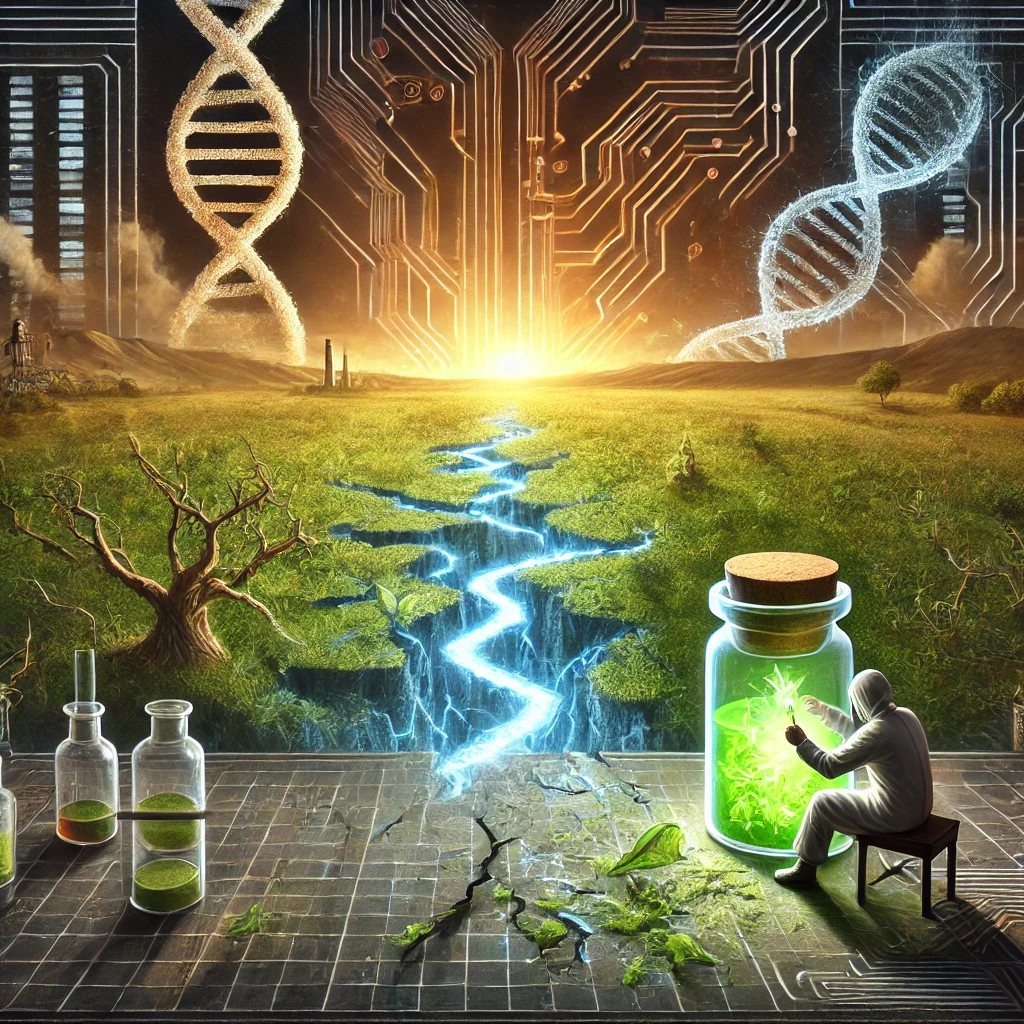
The metaphor of miscalculating the essential ingredients of a complex recipe aptly encapsulates the perils inherent in our modern interventions. Imagine a master chef who, in an effort to innovate, inadvertently omits or mismeasures a crucial spice. The resultant dish, though innovative, may fail to deliver the intended harmony of flavors and could, in extreme cases, result in an inedible or even toxic concoction. Similarly, our attempts to rapidly re-engineer natural processes without fully apprehending the intricate interplay of ecological factors run the risk of unforeseen and potentially catastrophic outcomes.
Human history is replete with examples of such miscalculations. The introduction of invasive species, the oversimplification of ecological interventions, and the unintended consequences of industrial pollutants all serve as cautionary tales. These historical missteps underscore the vital importance of a measured, respectful approach to scientific intervention—a reminder that nature, in its grand complexity, defies reductionist attempts at control.
IV. The Ethical Imperative: A Call for Caution and Reflection

In the face of such profound potential for both benefit and harm, it becomes incumbent upon us to adopt a framework of ethical responsibility. Ethical considerations in scientific and technological advancements are not merely abstract philosophical musings but are integral to safeguarding the continuity and stability of life itself. As we venture into realms of genetic modification, ecological engineering, and environmental remediation, we must proceed with a steadfast commitment to the principles of precaution and humility.
Ethics, in this context, serves as both a moral compass and a pragmatic guide. It demands that we engage in rigorous risk assessments, consult a diverse array of perspectives—including those of indigenous communities, ecologists, and ethicists—and prioritize long-term ecological health over short-term gains. The notion of ‘do no harm’ must extend beyond the immediate and visible, encompassing the latent and far-reaching implications of our interventions. Only through such conscientious deliberation can we hope to navigate the treacherous waters of modern scientific advancement without compromising the integrity of Mother Nature’s grand design.
V. The Grand Scheme of Mother Nature: A Call for Reverence

At the heart of this discourse lies an imperative for reverence—a profound respect for the natural world and its intricate processes. Mother Nature is not a mere resource to be exploited but a living, dynamic system that has evolved through the slow, deliberate interplay of countless factors. Her wisdom is encoded in the resilience of ecosystems, the delicate balance of predator and prey, and the seamless integration of countless species into a harmonious whole.
Reverence for Mother Nature entails acknowledging that our understanding of her complexities remains incomplete. While modern science has illuminated many of nature’s mysteries, it has also revealed the staggering depth and nuance of natural processes. This recognition should inspire humility rather than hubris. In the spirit of reverence, we must be vigilant stewards, ensuring that our actions do not undermine the natural rhythms that have sustained life for eons.
The reverence for the grand scheme of nature is, therefore, not antithetical to progress but rather its necessary complement. It is a call to temper our ambitions with wisdom and to ensure that our pursuit of rapid change is guided by a respect for the intrinsic value of all life forms. Such an approach demands a reevaluation of our priorities, placing ecological integrity at the forefront of our endeavors.
VI. Scientific Advancement and Ethical Stewardship: Finding the Balance
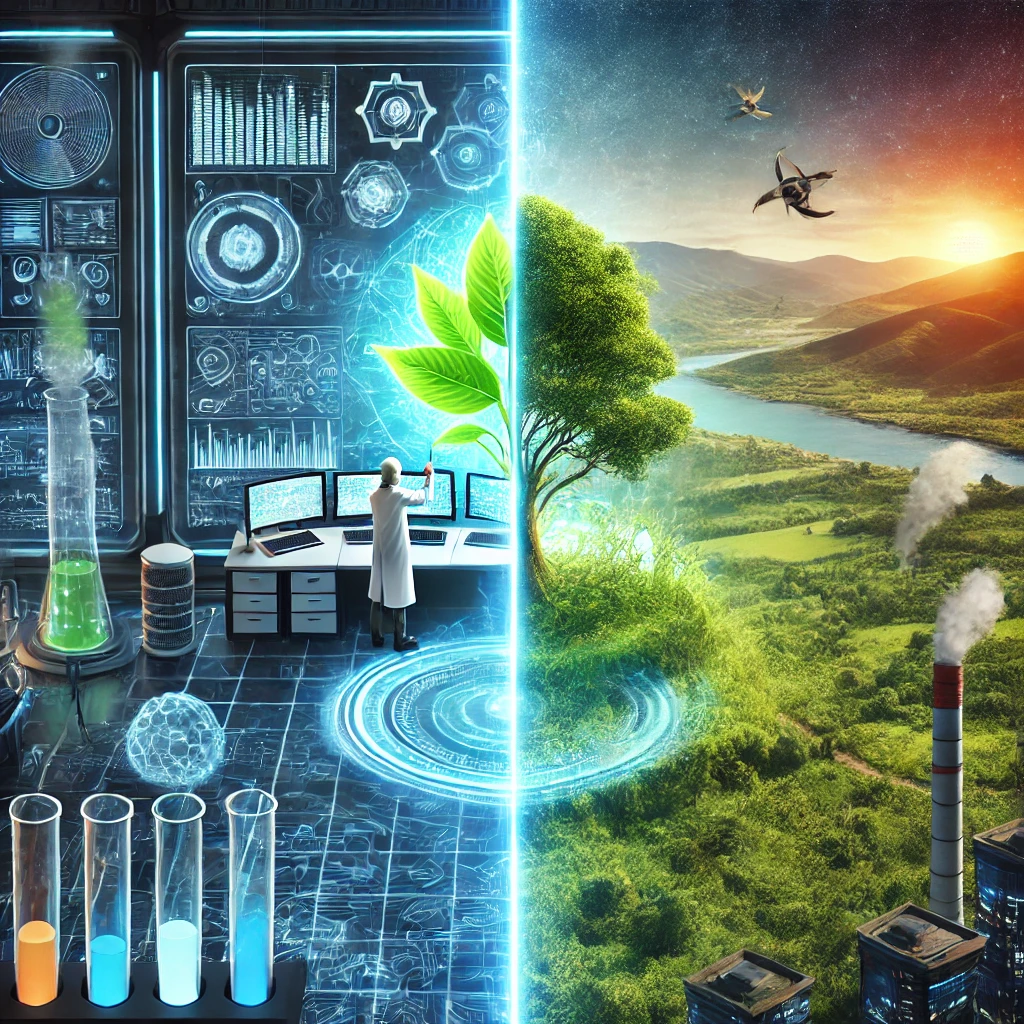
The confluence of scientific innovation and ethical responsibility forms the crux of our contemporary challenge. On one hand, the tools of modern science afford us the unprecedented ability to reshape the living world in ways that were once the domain of myth and imagination. On the other hand, this very capability necessitates a heightened awareness of our limitations and the potential for unintended consequences.
To bridge this gap, it is essential that scientific progress be coupled with robust ethical frameworks. Interdisciplinary collaboration is paramount—one that brings together scientists, ethicists, policymakers, and community stakeholders to deliberate on the implications of new technologies. The establishment of stringent regulatory standards, continuous monitoring of ecological impacts, and an ongoing commitment to public education are all indispensable components of this integrated approach.
Moreover, the cultivation of a culture that values long-term sustainability over short-term expediency is crucial. This cultural shift requires both institutional support and grassroots advocacy, ensuring that ethical considerations are embedded in every stage of scientific research and development. Only by harmonizing the drive for innovation with a respect for natural order can we hope to achieve a future that is both technologically advanced and ecologically sound.
VII. The Historical Context: Learning from Past Interventions

History provides us with ample evidence that haste in the face of nature’s complexities can lead to dire consequences. The ecological disruptions wrought by industrialization, the collapse of fisheries due to overexploitation, and the unintended spread of genetically modified organisms are stark reminders of the risks inherent in unsustainable practices. Each of these instances underscores the necessity of aligning our technological aspirations with the enduring principles of ecological balance.
For instance, consider the case of the introduction of non-native species to control agricultural pests—a strategy that, in several instances, has backfired spectacularly, leading to the decimation of native flora and fauna. These historical episodes compel us to recognize that the natural world operates on principles that are not readily amenable to simplistic manipulation. The lessons of the past serve as a clarion call for a more measured approach, one that privileges the wisdom of natural processes over the allure of immediate gains.
VIII. The Socio-Political Dimensions of Ethical Naturalism
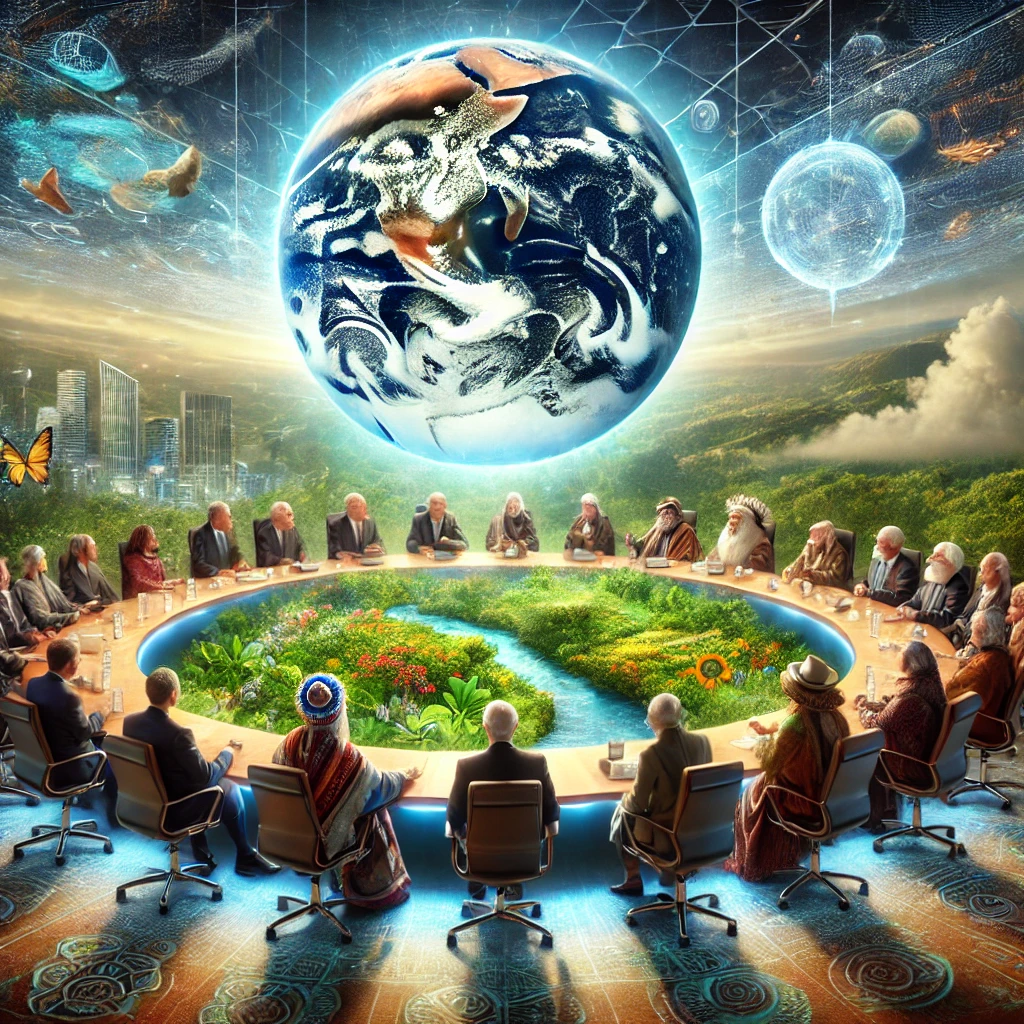
In contemplating the intersection of natural evolution and human intervention, one must also consider the socio-political dimensions that influence our decision-making processes. Policies governing environmental stewardship, resource management, and scientific research are inextricably linked to the ethical considerations that underpin our relationship with nature. The formulation of such policies demands a delicate balancing act—one that reconciles the imperatives of economic growth, technological advancement, and ecological sustainability.
Political leaders and policymakers bear a significant responsibility in this context. They must be guided by an ethos of precaution, ensuring that the long-term interests of the global ecosystem are not sacrificed at the altar of short-term progress. Transparent dialogue, inclusive governance, and an unwavering commitment to environmental justice are essential in crafting policies that honor the legacy of natural evolution while fostering responsible innovation.
It is incumbent upon us, therefore, to advocate for governance structures that are both adaptive and resilient—capable of responding to the unforeseen challenges that may arise from our interventions in natural processes. The integration of ethical naturalism into the fabric of public policy is not merely a lofty ideal but a pragmatic necessity if we are to safeguard the future of life on Earth.
IX. Philosophical Reflections on the Nature of Progress

The pursuit of rapid change, while emblematic of human ingenuity, is fraught with philosophical dilemmas. At its core, the tension between progress and preservation speaks to a deeper existential question: What does it mean to be the steward of a planet that has evolved long before our arrival? This question invites a profound introspection into the nature of progress itself—challenging us to define advancement not solely in terms of technological achievements but also in terms of our ability to coexist harmoniously with the natural world.
In many respects, the philosophical underpinnings of our relationship with nature have been overshadowed by the triumphalist narrative of human dominion. Yet, true progress must be measured not merely by our capacity to alter nature but by our willingness to honor its inherent wisdom. This philosophical recalibration demands a renewed commitment to values such as humility, patience, and an enduring sense of wonder at the complexity of life. It is only by embracing these values that we can hope to navigate the ethical quandaries of modern scientific inquiry and ensure that our legacy is one of stewardship rather than exploitation.
X. Concluding Reflections: The Imperative of a Harmonious Future
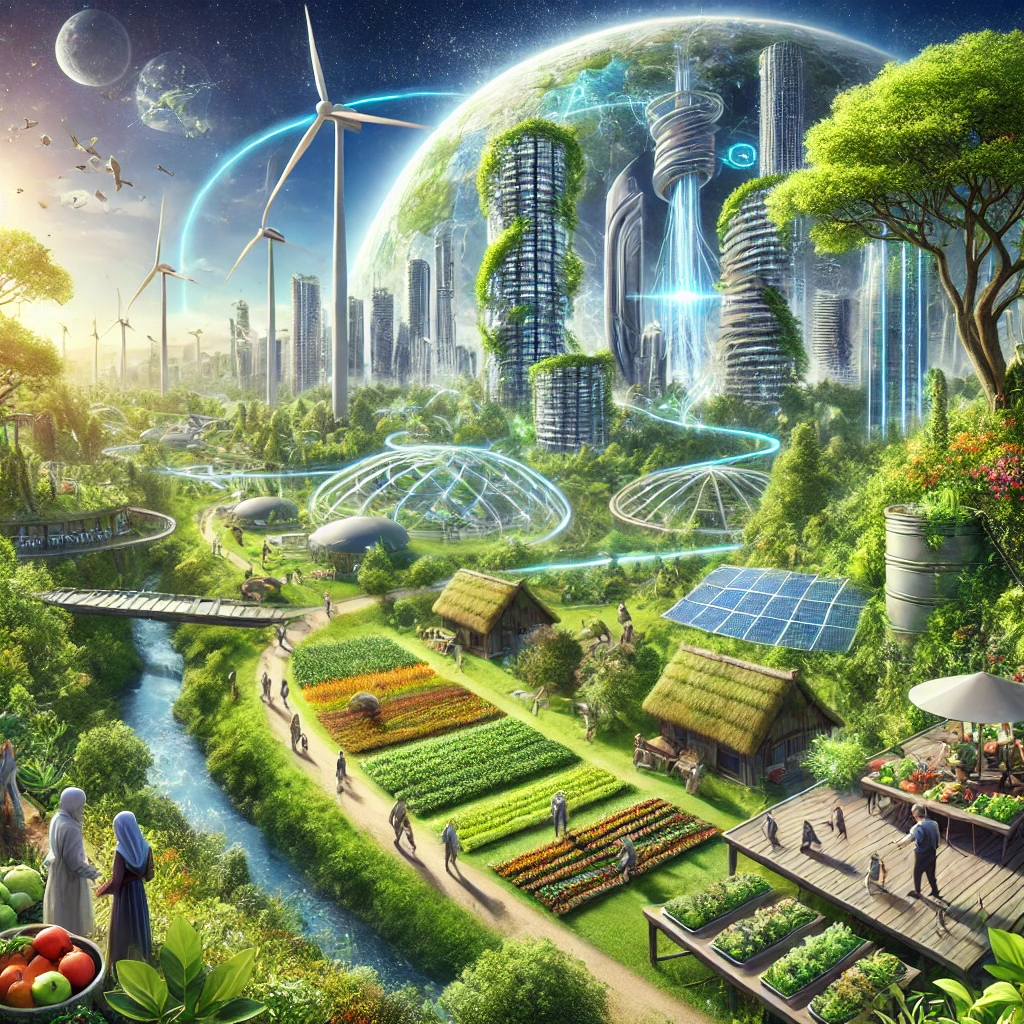
In summation, the rapid pace of human intervention in natural processes, though replete with promise, necessitates a measured and ethically grounded approach. The metaphor of a miscalculated recipe serves as a potent reminder that even the slightest error in our manipulation of life’s fundamental mechanisms can yield disastrous consequences. As we stand on the precipice of a new epoch—one characterized by the convergence of genetic science, environmental engineering, and technological prowess—we must embrace a philosophy of reverence for Mother Nature and a commitment to ethical restraint.
Dear Reader, it is incumbent upon us to ensure that our quest for rapid change does not compromise the intricate balance that has sustained life on this planet for billions of years. By integrating ethical stewardship with scientific advancement, by heeding the lessons of history and respecting the grand tapestry of natural evolution, we can aspire to a future that is both innovative and harmonious.
Let us, therefore, resolve to approach our interventions with the care of a master artisan—meticulously measuring each ingredient, anticipating every consequence, and always, above all, holding in reverence the enduring majesty of Mother Nature. In doing so, we safeguard not only the integrity of our natural heritage but also the promise of a sustainable and enlightened future for generations yet to come.
This comprehensive discourse has sought to explore the multifaceted relationship between human ambition and the natural world, advocating for a future in which progress is tempered by caution, and innovation is harmonized with a deep, abiding respect for the ecological processes that have long governed the evolution of life on Earth.
Treaty on the Ethical and Responsible Application of Human-Driven Evolution: A Comprehensive Framework
. Introduction to Human-Driven Evolution
The natural process of evolution has been a gradual and intricate dance of genetic variation, selection, and adaptation over millions of years. However, humanity’s growing understanding of genetics, molecular biology, and computational tools has enabled us to accelerate and direct evolutionary processes. This treaty aims to address the ethical, philosophical, ecological, and societal implications of human-driven evolution, ensuring that our interventions are guided by wisdom rather than haste or hubris.
Human impatience, combined with the potential for error inherent in any complex endeavor, necessitates a framework for responsible action. The goal is not to stifle innovation but to ensure that advancements align with long-term sustainability, equity, and respect for the intrinsic value of all forms of life.
Introduction to Human-Driven Evolution
The natural process of evolution has shaped life on Earth over billions of years, operating through mechanisms such as mutation, selection, genetic drift, and gene flow. However, humanity’s growing understanding of genetics, molecular biology, and computational tools has enabled us to accelerate and direct evolutionary processes in unprecedented ways. This treaty seeks to address the ethical, philosophical, ecological, and societal implications of human-driven evolution, ensuring that our interventions are guided by wisdom rather than haste or hubris.
Human impatience, combined with the potential for error inherent in any complex endeavor, necessitates a framework for responsible action. The goal is not to stifle innovation but to ensure that advancements align with long-term sustainability, equity, and respect for the intrinsic value of all forms of life.
The Ingredients of Evolution
To fully comprehend the scope of human-driven evolution, we must first understand its fundamental components:
- Genetic Variation: The raw material of evolution, arising from mutations, recombination, and horizontal gene transfer.
- Natural Selection: Differential survival and reproduction based on traits that confer advantages in specific environments.
- Genetic Drift: Random changes in allele frequencies, particularly significant in small populations.
- Gene Flow: Movement of genes between populations, which can introduce new variations or homogenize existing ones.
- Epigenetics: Heritable changes in gene expression without altering DNA sequences, influenced by environmental factors.
- Symbiosis and Coevolution: Interactions between species that drive mutual adaptation.
- Ecological Context: Environmental pressures that shape selective forces.
These ingredients form the foundation upon which human-driven evolution operates. Understanding them is critical to avoiding unintended consequences.
Tools of Human Intervention
Humans now possess an array of powerful tools to manipulate these ingredients:
- CRISPR-Cas9 and Gene Editing Technologies: Precision tools for modifying genomes at will.
- Synthetic Biology: Designing entirely new biological systems or redesigning existing ones.
- Artificial Intelligence and Computational Modeling: Predicting outcomes of genetic modifications and simulating evolutionary scenarios.
- Cloning and Reproductive Technologies: Creating genetically identical organisms or enhancing reproductive capabilities.
- Bioremediation and Bioengineering: Using engineered organisms to solve environmental problems or create novel materials.
While these tools hold immense promise, they also carry risks, including unforeseen ecological disruptions, loss of biodiversity, and ethical dilemmas.
Impatience and Its Consequences
Human impatience often leads to premature deployment of technologies before their full impacts are understood. Historical examples include:
- The introduction of invasive species for pest control, leading to ecosystem collapse.
- Overuse of antibiotics, resulting in widespread antimicrobial resistance.
In the context of human-driven evolution, impatience could manifest as: - Rushed implementation of gene drives to eradicate disease vectors (e.g., mosquitoes), potentially destabilizing ecosystems.
- Premature release of genetically modified organisms (GMOs) into the wild, with unpredictable effects on native species.
This treaty emphasizes the importance of patience, rigorous testing, and interdisciplinary collaboration to mitigate these risks.
To Err Is Human
Mistakes are inevitable when dealing with complex systems like evolution. Examples include:
- Unintended off-target effects of CRISPR editing.
- Underestimating the interconnectedness of ecosystems.
To minimize errors, this treaty proposes:
- Robust Precautionary Principles: Prioritizing safety over speed.
- Fail-Safe Mechanisms: Designing interventions with built-in reversibility or containment strategies.
- Transparency and Accountability: Open sharing of data and methodologies to foster collective learning.
Ethical Considerations
Ethics lie at the heart of responsible human-driven evolution. Key questions include:
- Who decides which traits are desirable?
- How do we balance individual rights with collective welfare?
- What responsibilities do we have toward future generations and non-human life?
This treaty advocates for inclusive decision-making processes involving diverse stakeholders—scientists, ethicists, policymakers, indigenous communities, and the public—to ensure equitable outcomes.
Ecological Impacts
Ecosystems are intricate webs of interactions. Altering one component can ripple across the entire system. Potential ecological impacts of human-driven evolution include:
- Loss of biodiversity due to artificial selection favoring certain traits.
- Disruption of food chains and nutrient cycles.
- Creation of “genetic monocultures” vulnerable to diseases or environmental changes.
Mitigation strategies involve conducting thorough ecological risk assessments and adopting adaptive management approaches.
Societal Implications
Human-driven evolution raises profound societal questions:
- Will access to advanced biotechnologies exacerbate inequality?
- Could designer babies or enhanced humans lead to new forms of discrimination?
- How do cultural values influence acceptance of these technologies?
Addressing these issues requires fostering global dialogue, promoting education, and enacting policies that prioritize justice and inclusivity.
Governance and Regulation
Effective governance is essential to prevent misuse and ensure accountability. Recommendations include:
- Establishing international regulatory bodies to oversee research and applications.
- Developing standardized guidelines for risk assessment and ethical review.
- Encouraging transparency through mandatory reporting and peer review.
Collaboration between nations is crucial, given the transboundary nature of many evolutionary interventions.
Conclusion and Call to Action
Humanity stands at a crossroads. Our ability to shape evolution offers unparalleled opportunities to improve health, agriculture, and environmental sustainability. Yet, it also poses existential risks if mismanaged. This treaty calls for:
- A commitment to humility and caution in wielding these powerful tools.
- Investment in education and public engagement to build informed consent.
- Prioritization of long-term benefits over short-term gains.
By embracing responsibility, foresight, and cooperation, we can harness the power of human-driven evolution while safeguarding the planet’s future.
Signatories:
[Space for signatures of participating nations, organizations, and institutions]
Date of Adoption:
[To be determined]
This treaty serves as both a roadmap and a warning—a reminder that while humanity holds the keys to reshape life itself, we must wield them with care, wisdom, and reverence for the complexity of the natural world.
Explanatory integration and integrated explanations
In evolutionary mechanisms and implications
Genetic Variation
Definition: Genetic variation is the raw material of evolution, arising from mutations, recombination, and horizontal gene transfer. It provides the diversity upon which natural selection acts.
Mechanisms:
- Mutations: Random changes in DNA sequences, which can be point mutations, insertions, deletions, or chromosomal rearrangements.
- Recombination: The shuffling of genetic material during meiosis, leading to new combinations of alleles.
- Horizontal Gene Transfer: The exchange of genetic material between different species, common in bacteria and some eukaryotes.
Implications:
- Diversity and Adaptability: High genetic variation increases the adaptability of populations to changing environments.
- Evolutionary Potential: Greater variation provides more options for natural selection to act upon, driving evolutionary change.
Human-Driven Interventions: - Gene Editing: Techniques like CRISPR-Cas9 allow precise modification of specific genes.
- Synthetic Biology: Designing new genetic pathways or organisms with desired traits.
Ethical Considerations: - Ensuring that genetic modifications do not reduce overall genetic diversity.
- Avoiding the creation of “superior” genotypes that could outcompete and displace natural variants.
Natural Selection
Definition: Natural selection is the differential survival and reproduction of individuals based on heritable traits that confer fitness advantages in specific environments.
Mechanisms:
- Directional Selection: Favors one extreme of a trait distribution.
- Stabilizing Selection: Favors intermediate trait values, reducing variation.
- Disruptive Selection: Favors both extremes of a trait distribution, increasing variation.
- Sexual Selection: Traits that enhance mating success, often leading to sexual dimorphism.
Implications:
- Adaptation: Populations become better suited to their environments over time.
- Speciation: Accumulation of differences can lead to the formation of new species.
Human-Driven Interventions: - Selective Breeding: Choosing individuals with desirable traits for reproduction.
- Gene Drives: Engineering genes to spread rapidly through populations, e.g., to control disease vectors.
Ethical Considerations: - Balancing the benefits of targeted selection with the potential for unintended ecological consequences.
- Ensuring that interventions do not lead to the extinction of valuable genetic resources.
Genetic Drift
Definition: Genetic drift is the random change in allele frequencies within a population, often more pronounced in small populations.
Mechanisms:
- Founder Effect: Genetic drift in a new population founded by a small number of individuals.
- Bottleneck Effect: Severe reduction in population size followed by recovery, leading to reduced genetic diversity.
Implications:
- Loss of Genetic Diversity: Small populations are more susceptible to the loss of rare alleles.
- Fixation of Alleles: Random events can lead to the fixation of advantageous or deleterious alleles.
Human-Driven Interventions: - Conservation Genetics: Managing small populations to maintain genetic diversity.
- Population Management: Avoiding practices that lead to population bottlenecks.
Ethical Considerations: - Preserving genetic diversity as a buffer against future environmental changes.
- Ensuring that interventions do not inadvertently reduce the resilience of populations.
Gene Flow
Definition: Gene flow is the movement of genes between populations, which can introduce new variations or homogenize existing ones.
Mechanisms:
- Migration: Physical movement of individuals or gametes between populations.
- Hybridization: Mating between individuals of different species or subspecies.
Implications:
- Gene Pool Enrichment: Introduces new genetic material, potentially increasing adaptability.
- Gene Pool Homogenization: Can reduce genetic differences between populations.
Human-Driven Interventions: - Transgenic Organisms: Introducing foreign genes into organisms.
- Biocontrol Agents: Releasing organisms to control pests or diseases.
Ethical Considerations: - Assessing the potential for gene flow to disrupt local ecosystems.
- Ensuring that introduced genes do not pose risks to native species.
Epigenetics
Definition: Epigenetics refers to heritable changes in gene expression that do not involve alterations to the DNA sequence, influenced by environmental factors.
Mechanisms:
- DNA Methylation: Addition of methyl groups to DNA, often silencing gene expression.
- Histone Modification: Changes to histone proteins that affect DNA accessibility.
- RNA Interference: Small RNA molecules that regulate gene expression.
Implications:
- Phenotypic Plasticity: Organisms can respond to environmental changes without altering their DNA.
- Transgenerational Effects: Epigenetic changes can be passed down to offspring.
Human-Driven Interventions: - Environmental Management: Creating conditions that promote beneficial epigenetic states.
- Therapeutic Applications: Using epigenetic modifiers to treat diseases.
Ethical Considerations: - Ensuring that environmental interventions do not lead to harmful epigenetic changes.
- Respecting the autonomy of individuals in making decisions about epigenetic treatments.
Symbiosis and Coevolution
Definition: Symbiosis is a close and long-term interaction between different species, while coevolution is the reciprocal evolutionary change in interacting species.
Mechanisms:
- Mutualism: Both species benefit, e.g., pollinators and plants.
- Commensalism: One species benefits while the other is unaffected, e.g., birds nesting in trees.
- Parasitism: One species benefits at the expense of the other, e.g., parasites and hosts.
Implications:
- Interdependence: Species evolve in response to each other, creating complex ecological relationships.
- Ecosystem Stability: Symbiotic relationships can contribute to the stability and resilience of ecosystems.
Human-Driven Interventions: - Synthetic Symbioses: Engineering new symbiotic relationships for agricultural or industrial purposes.
- Coevolutionary Models: Using computational models to predict and manage coevolutionary dynamics.
Ethical Considerations: - Ensuring that synthetic symbioses do not disrupt existing ecological balances.
- Promoting coevolutionary models that enhance ecosystem services.
Ecological Context
Definition: The ecological context encompasses the environmental pressures and interactions that shape selective forces and evolutionary trajectories.
Mechanisms:
- Abiotic Factors: Non-living components of the environment, such as temperature, moisture, and soil composition.
- Biotic Factors: Living components of the environment, such as predators, prey, and competitors.
- Habitat Fragmentation: Division of habitats into smaller, isolated patches.
Implications:
- Selective Pressures: Environmental conditions determine which traits are advantageous.
- Ecosystem Dynamics: Interactions between species and their environment drive evolutionary change.
Human-Driven Interventions: - Restoration Ecology: Restoring degraded ecosystems to promote natural evolutionary processes.
- Conservation Planning: Managing land use to preserve ecological contexts.
Ethical Considerations: - Ensuring that interventions do not exacerbate habitat fragmentation or loss.
- Promoting holistic approaches to conservation that consider multiple ecological factors.
Impatience and Its Consequences
Definition: Human impatience often leads to premature deployment of technologies before their full impacts are understood.
Historical Examples:
- Invasive Species: Introduced for pest control, leading to ecosystem collapse.
- Antibiotic Overuse: Resulting in widespread antimicrobial resistance.
Potential Consequences in Human-Driven Evolution: - Premature Release of GMOs: Unpredictable effects on native species and ecosystems.
- Rushed Implementation of Gene Drives: Potential destabilization of ecosystems.
Mitigation Strategies: - Robust Precautionary Principles: Prioritizing safety over speed.
- Fail-Safe Mechanisms: Designing interventions with built-in reversibility or containment strategies.
- Transparency and Accountability: Open sharing of data and methodologies to foster collective learning.
To Err Is Human
Definition: Mistakes are inevitable when dealing with complex systems like evolution.
Examples:
- Unintended Off-Target Effects: CRISPR editing leading to unintended genetic changes.
- Underestimating Interconnectedness: Failing to account for the ripple effects of ecological interventions.
Strategies to Minimize Errors: - Robust Testing and Validation: Conducting extensive pre-deployment testing.
- Interdisciplinary Collaboration: Involving experts from various fields to identify potential pitfalls.
- Adaptive Management: Monitoring and adjusting interventions based on real-world outcomes.
Conclusion: Humanity stands at a crossroads. Our ability to shape evolution offers unparalleled opportunities to improve health, agriculture, and environmental sustainability. Yet, it also poses existential risks if mismanaged. This treaty calls for: - A commitment to humility and caution in wielding these powerful tools.
- Investment in education and public engagement to build informed consent.
- Prioritization of long-term benefits over short-term gains.
By embracing responsibility, foresight, and cooperation, we can harness the power of human-driven evolution while safeguarding the planet’s future
